Book Review: Couture Zéro Chute
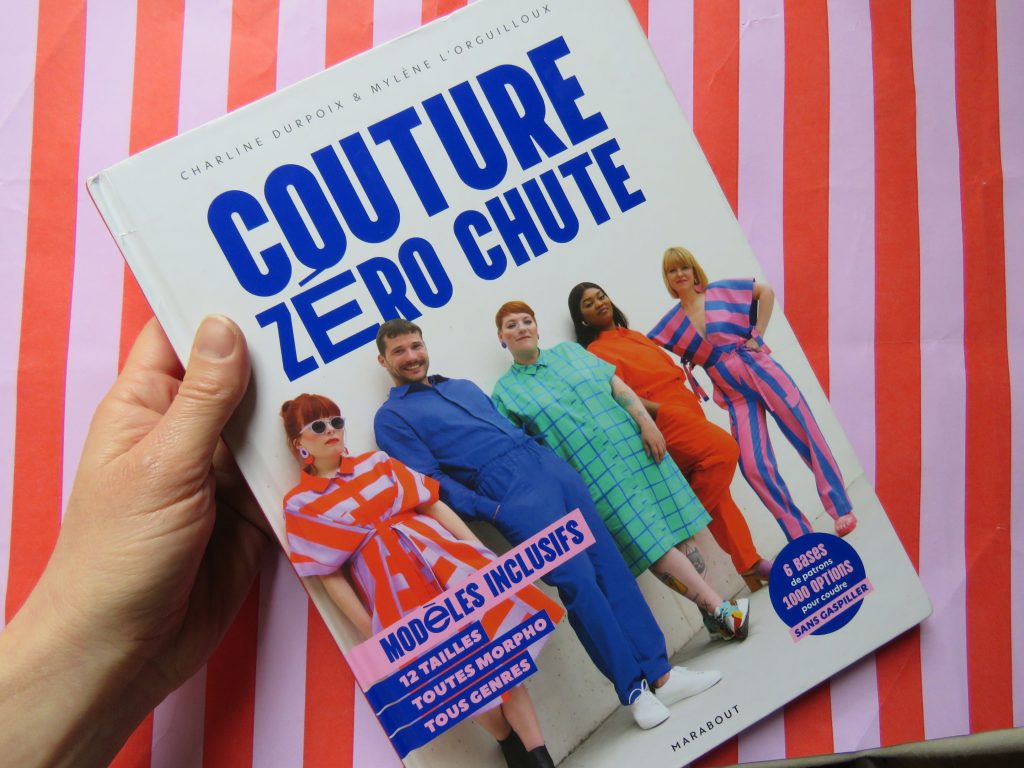
It’s my pleasure to review Couture Zéro Chute by Charline Durpoix and Mylène L’Orguilloux, which was published last month. The title translates as Sewing Zero Waste, and the book is a collection of six base patterns which can be combined or modified to produce many more styles.
Charline Durpoix is a sewing influencer, known in the French community for her style and humor.
Mylène L’Orguilloux is a zero waste patternmaker with technical flair, and an educator. Her website is RE.FORMONS NOUS (“let’s reform ourselves”) where resources for this book are housed, including a forum to ask questions if you get stuck.


The back blurb reads: Want to sew a stylish and engaged wardrobe? Discover an alternative to classic sewing that will allow you to limit the waste of fabric generated when cutting out pieces from a pattern. A toolbox to introduce you to the practice of scrap sewing: 6 modular base patterns and over 1000 options to explore your creativity without wasting fabric. An approach dedicated to all body types and genders. 12 different sizes corresponding to an equivalence of 36 to 56 (chest size from 86cm to 142cm). A breath of colourful air combined with contemporary and timeless cuts.
This book is more than just a pattern book, as the introductory pages encourage us to think creatively about making clothes, waste, cutting layouts and colour.
The six base patterns in the book are a t-shirt, shirt, wrap top, elastic waist pants, wrap pants and pleated skirt. Although they’re base patterns, they aren’t basic, and have details to give a high quality finish. For example, the shirt has a concealed front placket and side splits with facings.

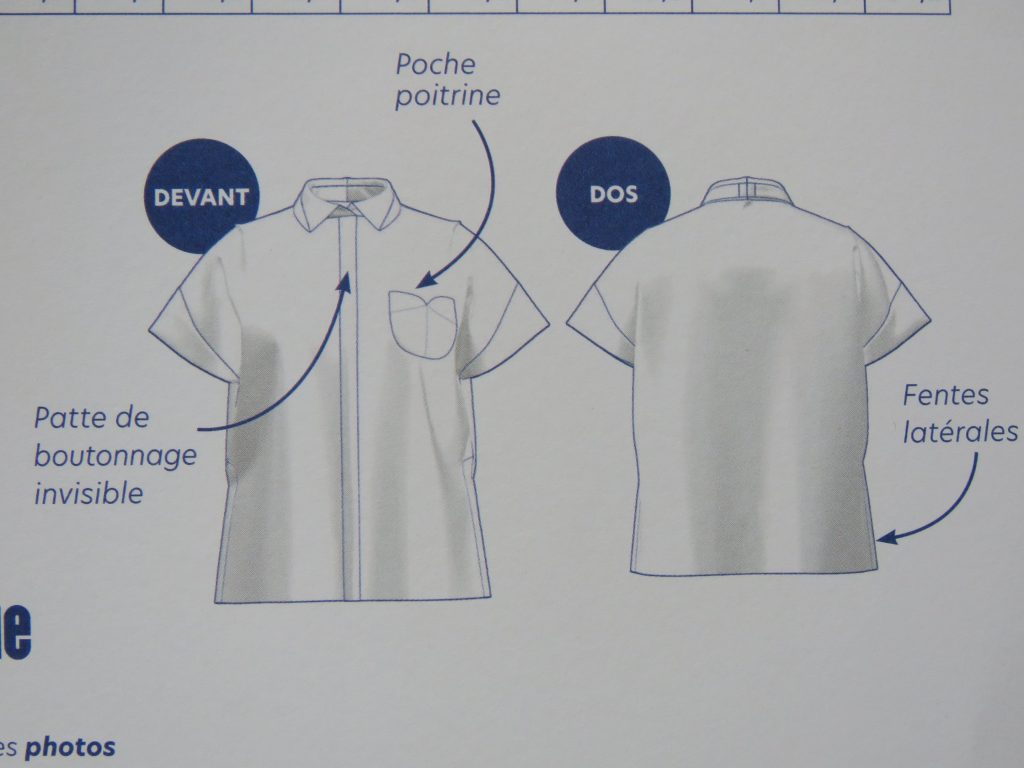
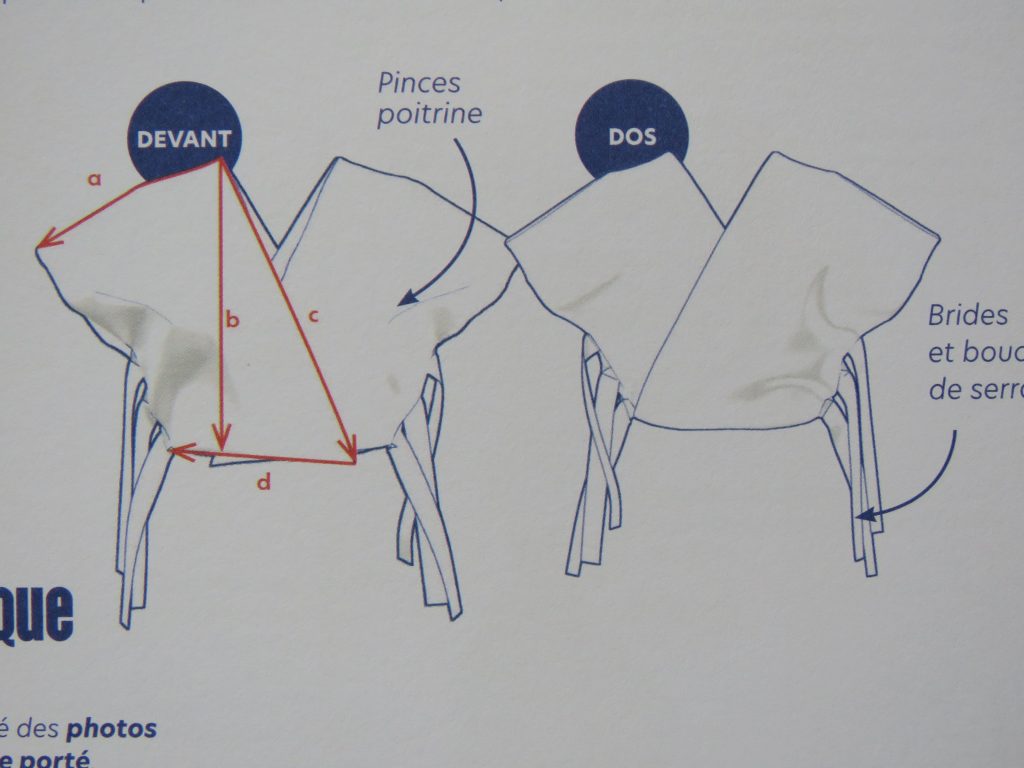
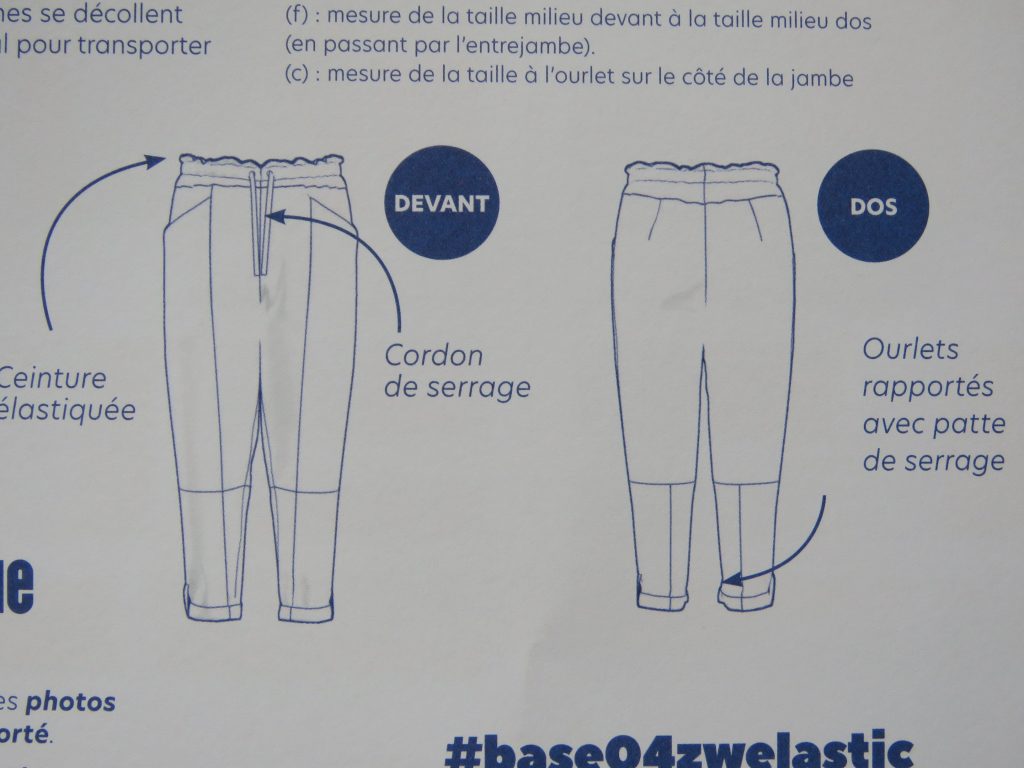
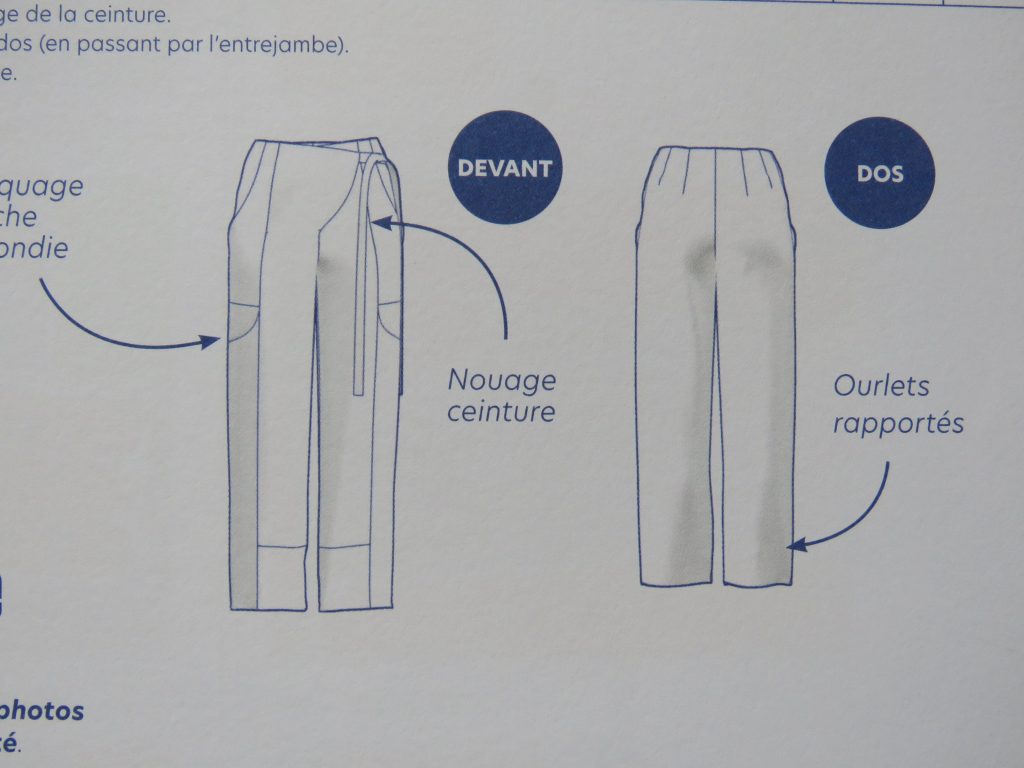
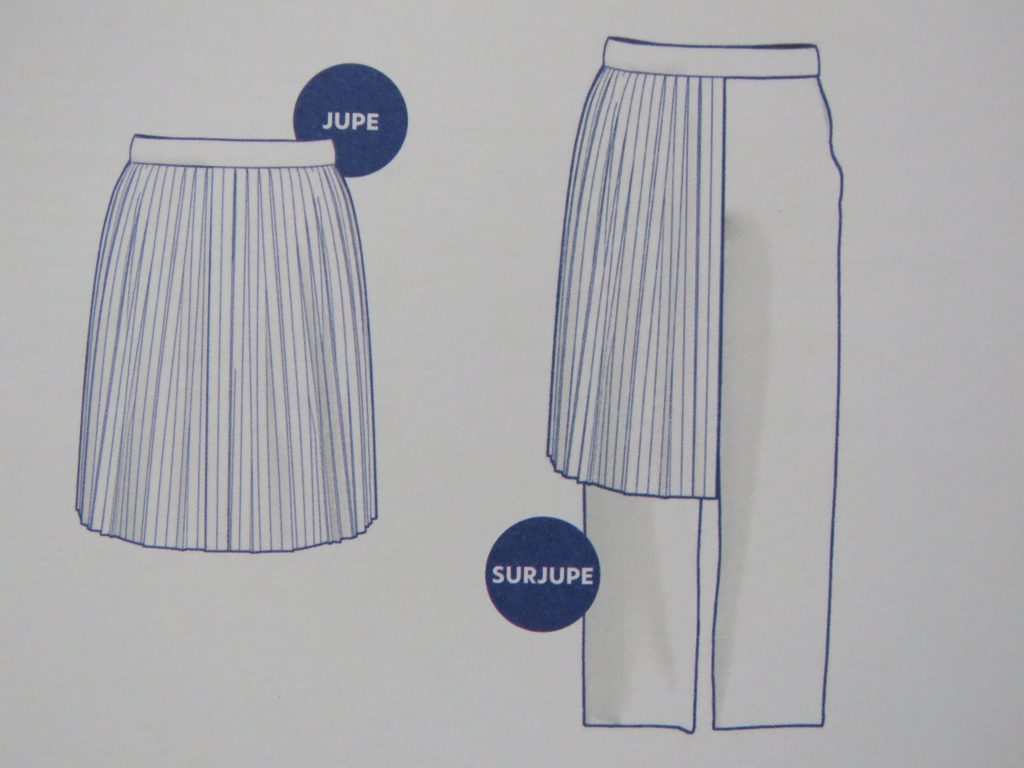
elastic waist pants; wrap pants; pleated skirt.
The patterns are in 12 sizes, to fit from Bust/chest 86cm-Waist 71cm-Hips 92cm to B142-W130-H148cm (= B34″-W28″-H36″ to B56″-W51″-H58″)
Couture Zéro Chute is written in French. However, with the wonders of technology, it’s easy to translate using an image translation app. I used Google image translate on a pc which did a passable job, backed up with my old high school French dictionary 🙂
It wouldn’t be a proper review if I didn’t make something from the book
It was hard to choose, but I made the elastic waist trousers.
For fabric: some pastel green slubby linen a friend gave me, which I think is a fairly old piece of fabric; it’s only 103cm wide, which is a clue. I dyed it with some black tea in a bucket overnight, and it came up a modern avocado shade, and much softer in handle. Unfortunately the tea was loose leaf, and I had to hang the fabric on the line and hose it off, but it smelt lovely when I ironed it!
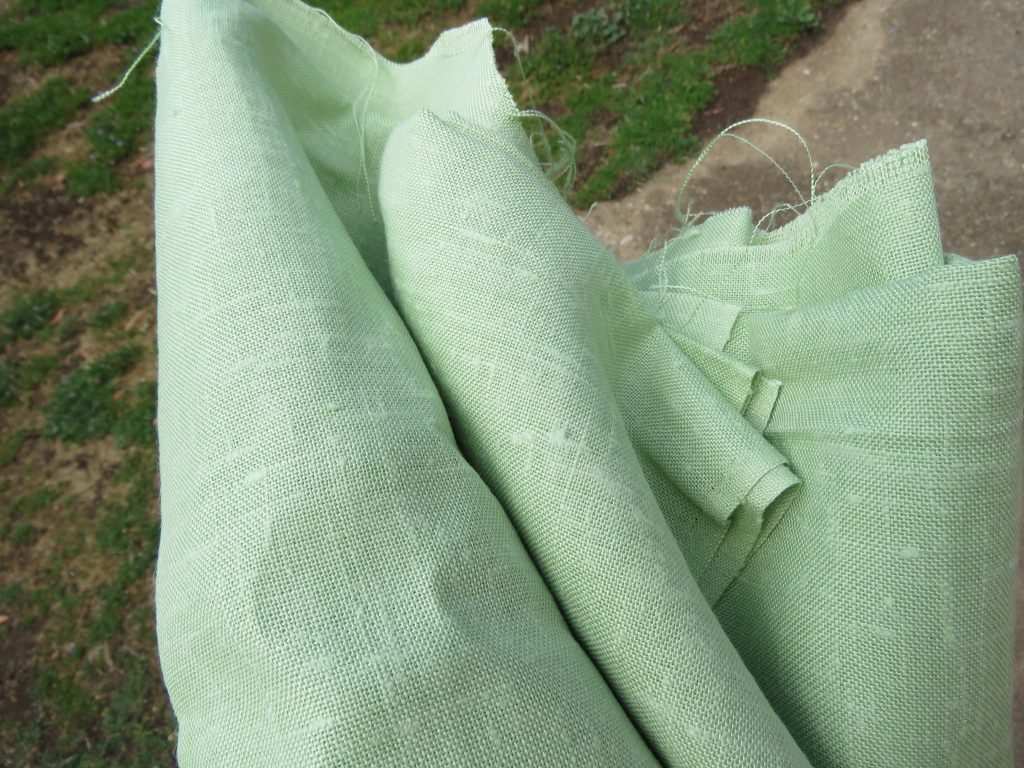
The book doesn’t have any tables of fabric requirements. Instead, it has downloadable mini pattern pieces which fit a to-scale grid. As the pattern pieces are modular, they can be moved around on the grid to fit your particular fabric width. You can also use the grid if you’re colour blocking and using several different fabrics. The beauty of this is that you can use any fabric width, and check to see beforehand if you have enough. I didn’t use the grid because I forgot about it – I did it straight on the fabric.
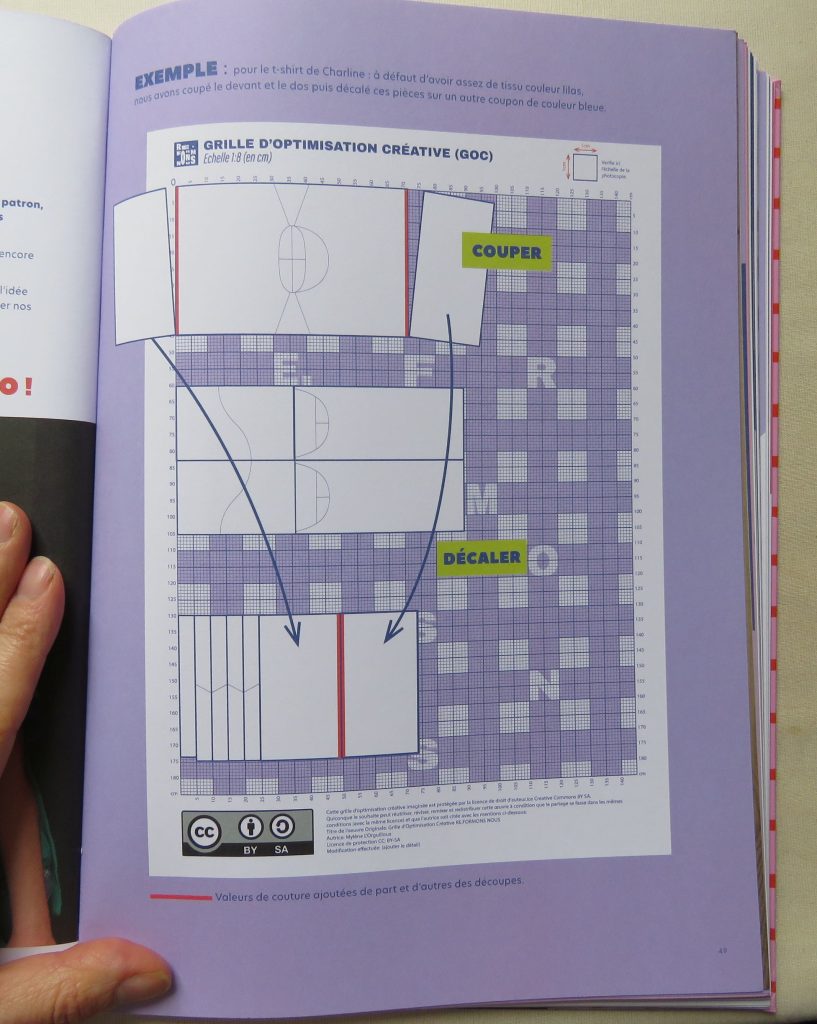
The actual pattern pieces are traced from pattern sheets in the book, like a Burda magazine. The seam allowances are already added. Like Burda, any other (square-shaped) pieces are drafted separately using measurements provided. All the book’s measurements are in centimetres. As well as the trouser pattern pieces, there was a stitching template needed which was accessed via a QR code in the book. It’s a pdf which had to be taped together (4 pages).
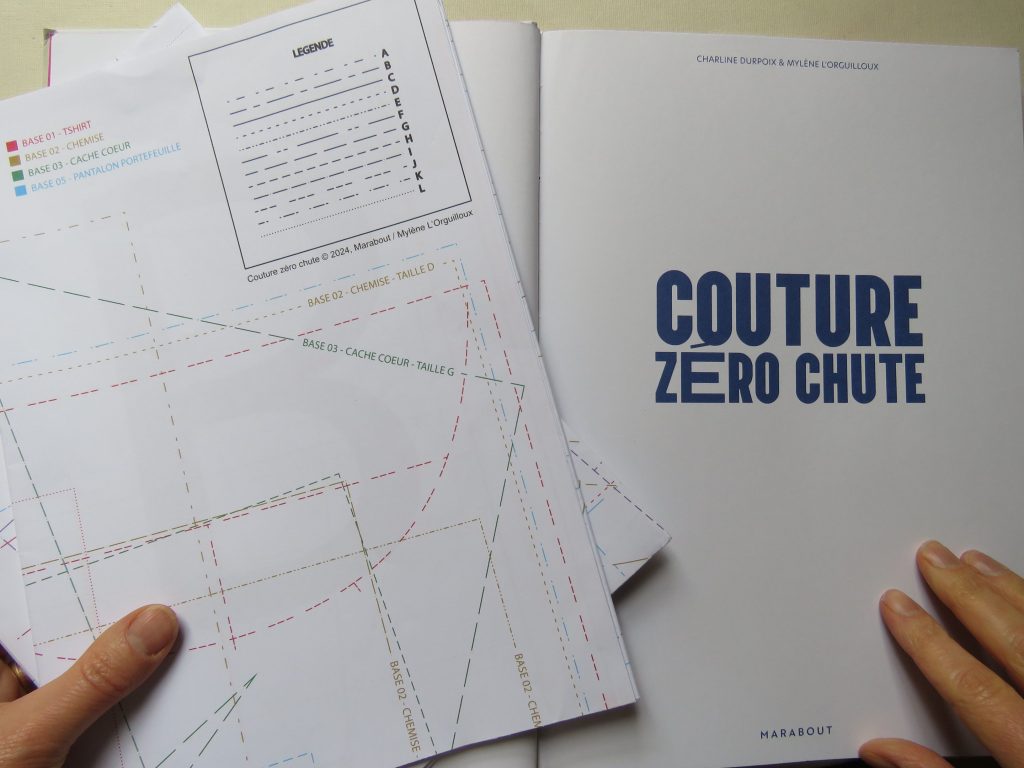
The trousers have cool design lines and there are some clever uses of pattern shapes. Like many zero waste patterns, space is required for cutting out, because the cutting layout is the pattern.
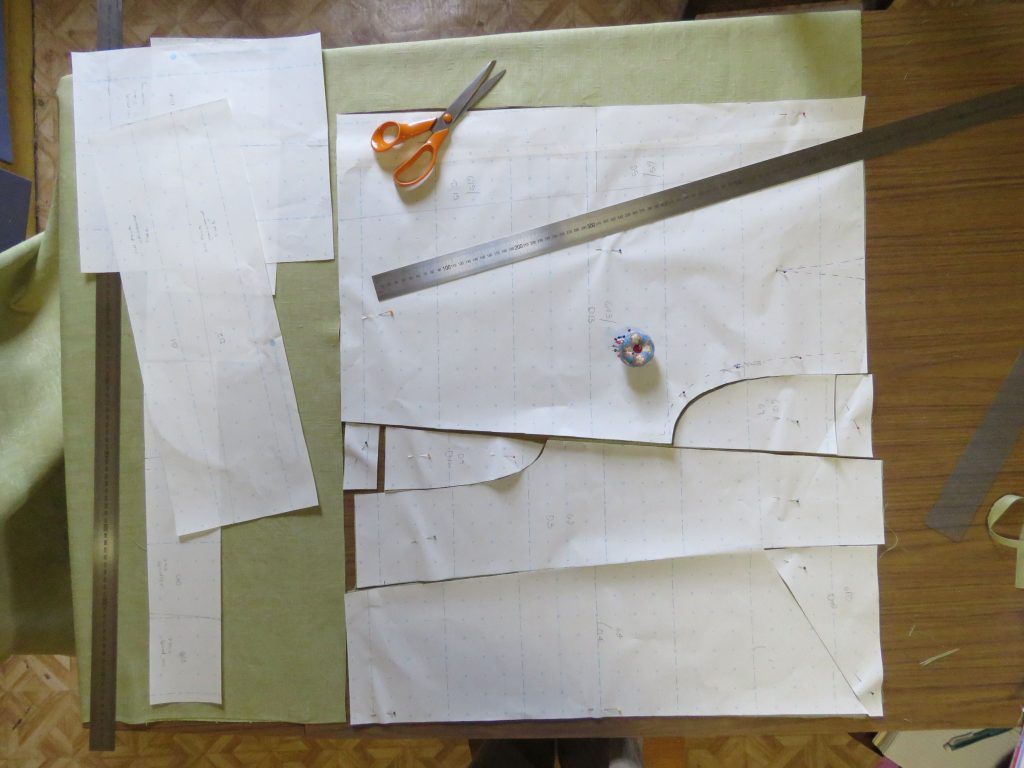
There were a lot of pattern pieces, and it paid to be organised with labeling them. I kept the pattern pieces pinned to the fabric until sewing, or I wouldn’t have had a hope as my fabric is the same on both sides.
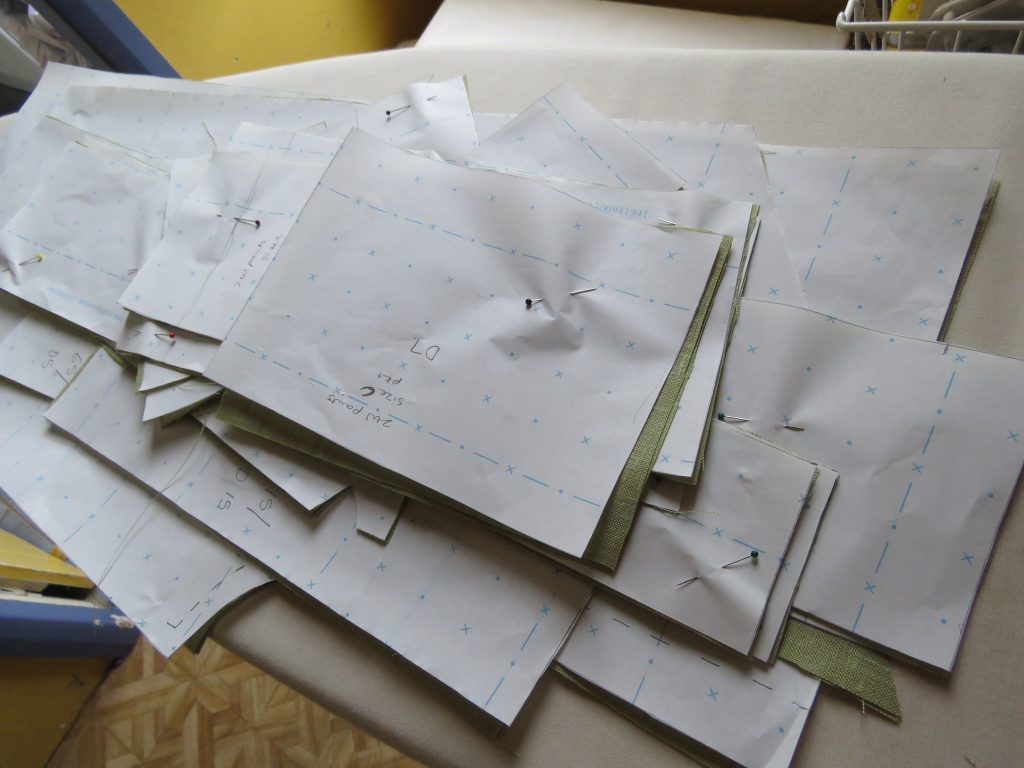
The trousers took 2.27m, which is economical considering the linen was only 103cm wide.
After cutting out, I still had 1.30m of fabric, which might be enough to cut a matching top. I very much like the idea of a two piece jumpsuit. Anyway, I put that idea aside for now.
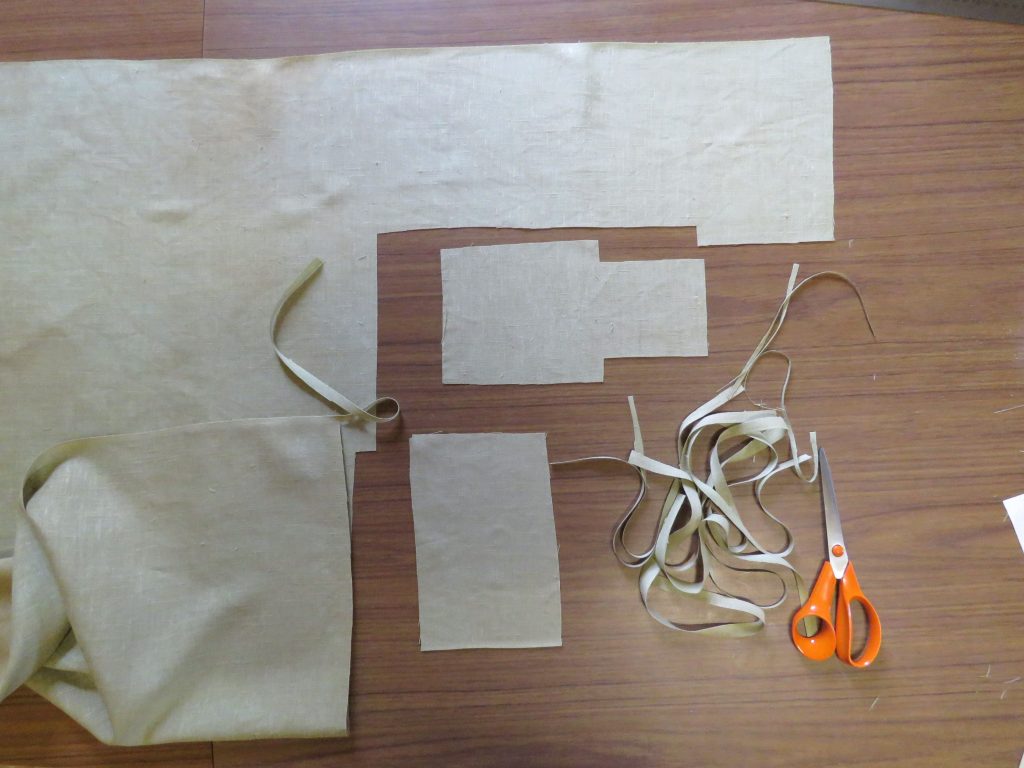
The sewing part went fairly smoothly. All the pieces went together fine. It is no small feat to make a zero waste pattern in twelve sizes with this many pattern pieces.
I did come unstuck with the pockets, user error on my part. I sewed them, then couldn’t work out why the centre front panel didn’t fit even thought there was a notch to line up the pocket with. Backtracking to the previous step, I recalled someone asking about this on the forum. The left and right pocket bags are different depths. This isn’t drawn attention to in the instructions, but if you happen to be reading this with a view to making the trousers, D9 and D12 form the bottom of the right pocket and G9 and G12 the left pocket. Anyway, I didn’t unpick and my trousers now have symmetrical pocket bags of the shorter depth, but actually this turned out to be just right.
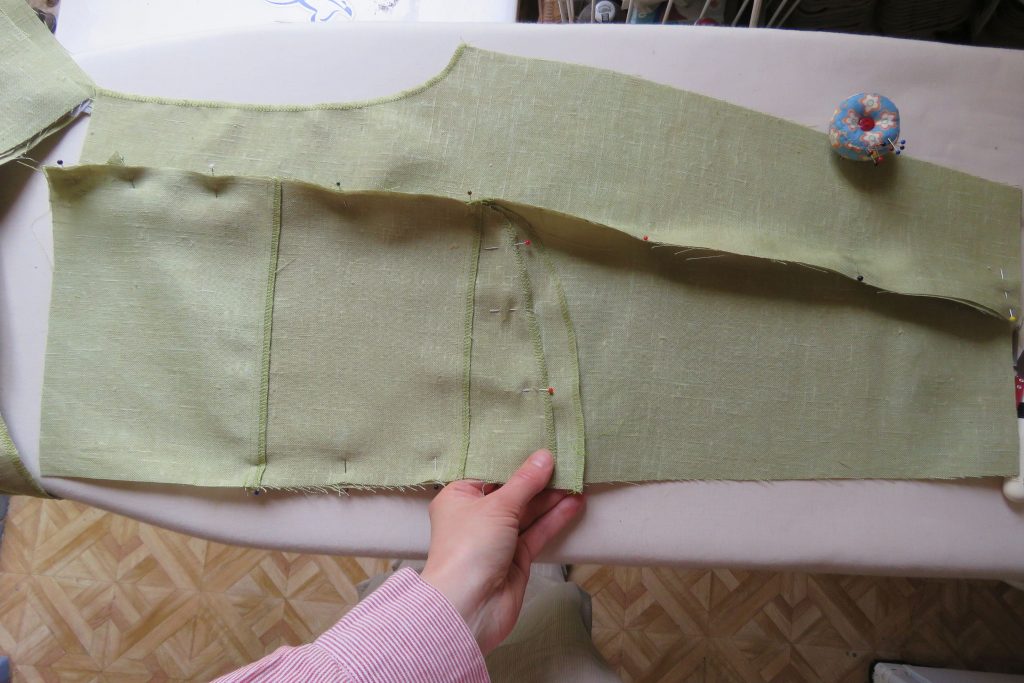
The hems of the trousers are finished with a deep facing, to be turned up into a cuff with a button-and-tab detail. I haven’t done the tabs (yet?).
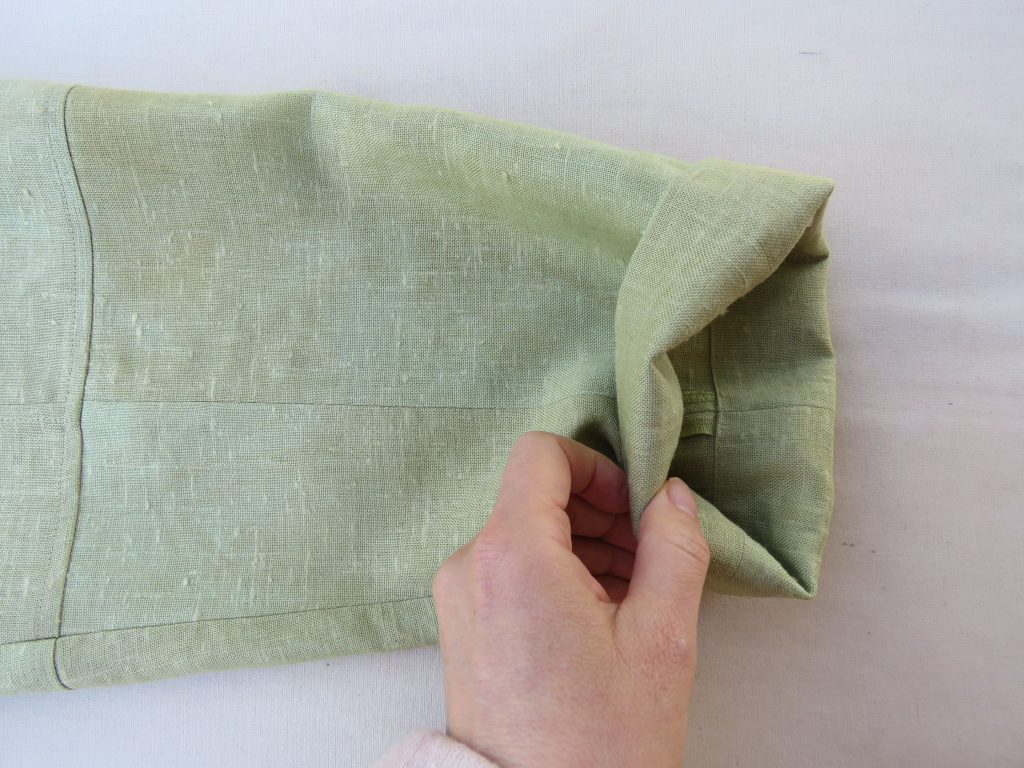
These pants are GREAT! Everything about them is excellent – the pockets, the fit, the length, the comfort. I made size C, and have the exact 100cm/40″ hips necessary for this size. If between sizes, I would go up to the next size. I’m 168cm/5’6″ tall.
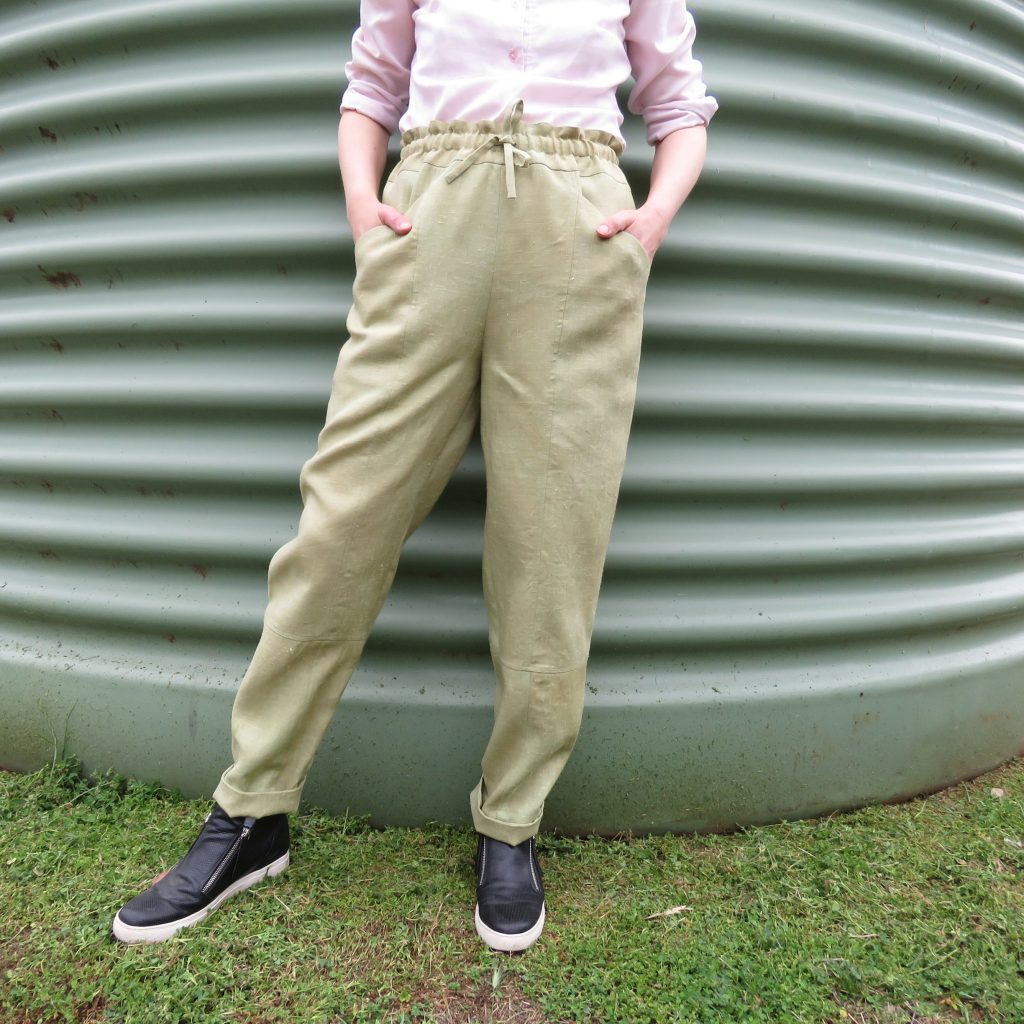
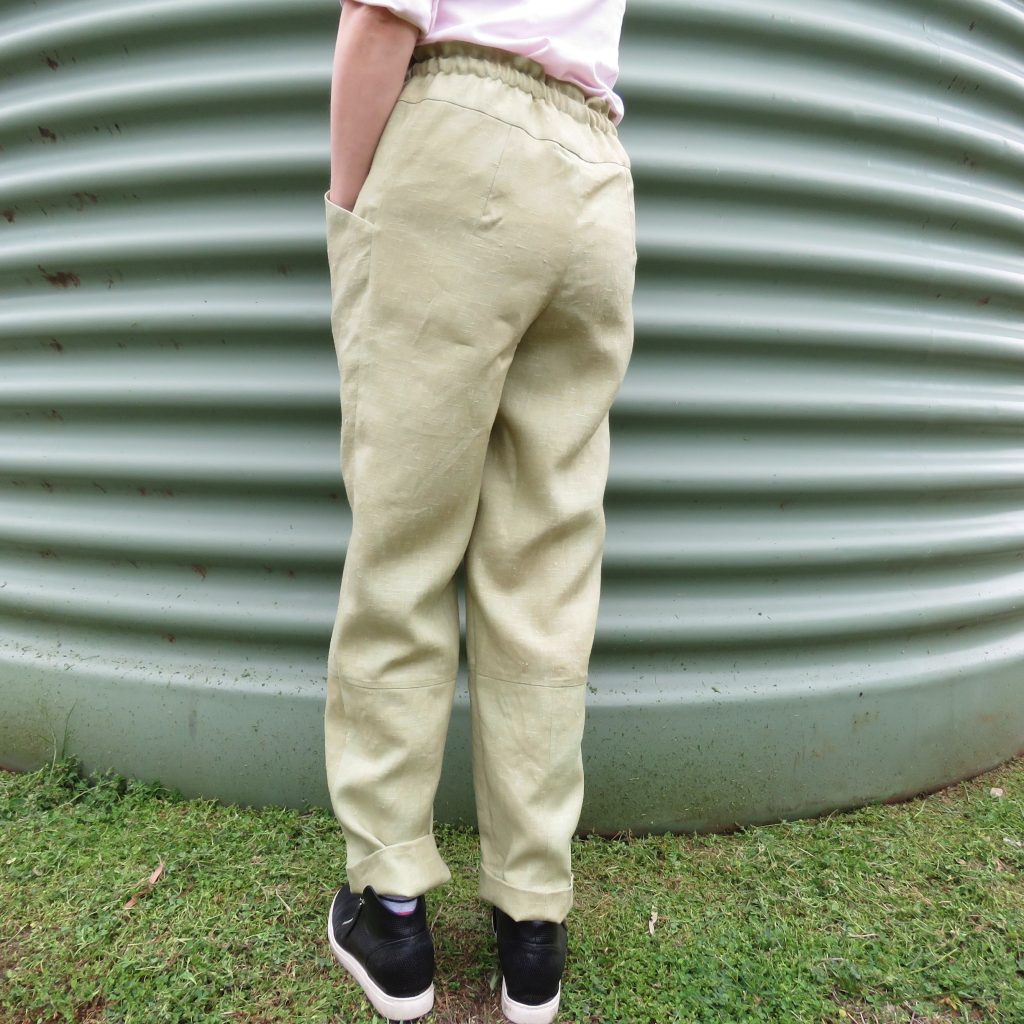
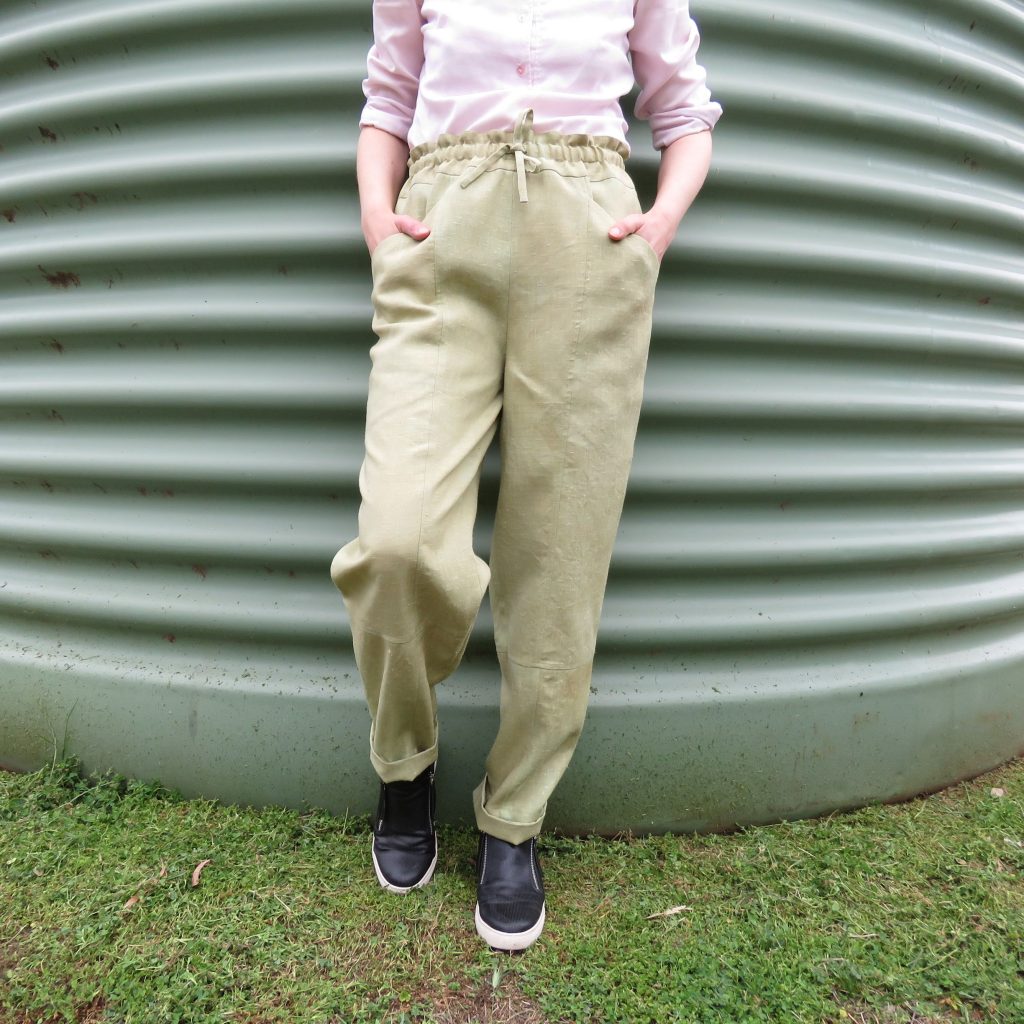
How long did the trousers take to make? I organised the pattern pieces and did the cutting out on one day, did most of the sewing a second day, and finished off the waistband and hem on a third day. These are no “5-minute make” but it was worth it.
Verdict: impressed. If you’re an adventurous sew-er and looking for a satisfying sewing experience, then there’s much in this book you’ll enjoy.
Where to buy this book. In France, Switzerland and Belgium it can be ordered in any local bookshop or online. In Canada, any local bookshop starting from November 1st. Otherwise, it’s on Amazon.
Cheers!
*In the interests of disclosure, I offered to review this book earlier this year when Mylène told me she was writing it, and Marabout Publishing sent a free review copy.
UPDATE: the following week, I styled these trousers nine different ways.
Dear Liz, What cool looking book aaand terrific trousers! Thanks for telling us about the book! (Zero waste sewing great garments aaand the opportunity confront and possbly overcome my high school French trauma! What a deal! )
If I could sum up this book in one word it would be “fun”!
That high school French will serve you well – years on, it’s amazing what stays in the brain!
I’m curious, is the upper size limit just where they decided to stop, or due to some other limitation? Could the more adventurous sewist extend the size range by extrapolation?
As always thank you for your contribution to the ZW sewing community.
Hi Michele, Liz here, just replying as an edit to your comment, as WordPress won’t let me reply normally.
It would be tricky for the reader to extend the size range as each size is presented in its own layout, not as a graded nest like a conventional pattern. It’s not possible to see how the pattern was graded unless several sizes are traced off and compared. As for the upper size limit, I can only speculate but would guess space would have something to do with it – print books have tighter restrictions on page numbers, pattern sheets etc than pdfs because it affects the cost. Good questions 🙂
I love that you are so thorough! You don’t just review the book, you actually make a garment, using one of the patterns. Well done!
Thanks Sandy. I only write reviews if if I feel I can recommend the book (otherwise, what’s the point?) and making one of the garments is a good test. Also, it’s a perk!
Thank you so much, Liz, for this thorough review!! It’s so frustrating to realize I didn’t highlight the difference in pocket depth! I was sure I had, but maybe it was in an earlier version that got lost through the various edits and layout integrations.
This pair of trousers was definitely the most challenging base pattern I’ve ever had to grade. Believe it or not, it took me 68 hours in total to figure out the right protocol and then replicate it, point by point, for all 12 sizes. I had to dive back into ‘two-variable equation’ mathematics to solve some of the pattern adjustments. Thankfully, it didn’t trigger any grading-related allergies! I’m so happy I eventually took the opportunity to learn through practice, and these have become my favorite pants to wear—no regrets. I just wish they were quicker to make! But I love the idea of offering advanced patterns for makers who, as you say, enjoy a good adventure!
I’m always impressed by the high quality of the content you provide here, so it’s an honor to read your review! I’m also really glad you enjoyed the outcome. 🙂
Hey Mylène! Congratulations on a great book! 12 sizes, zero waste, on a pattern with so many pieces is an impressive achievement. I can see why they’re your favourite pants.
It’s good to have intermediate/advanced zw patterns – no-one stays a beginner forever, and it pushes the boundaries.
Cheers!
Wow! The trousers look really great.
They feel great to wear, too 🙂
Pants!!! I’m ordering this book straight away. I did not take French in high school, wasn’t offered, but I’ll muddle through.
You will be fine with a translation tool and your own sewing experience, Michelle. I think you will like this book.
No delivery to NZ, gonna need to get creative.
Going to https://www.reformonsnous.fr/en/livre-couture-zero-chute-editions-marabout really gives you some inspiration.There are also forums to ask questions.
Thanks a lot for this post. I am in the middle of cutting pieces…
I hope it goes well for you. I’ve started on a short sleeved shirt from the same book.